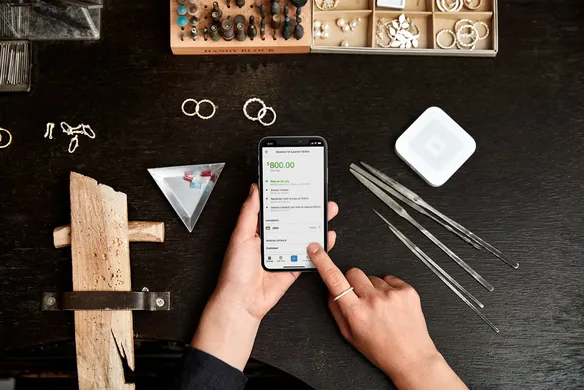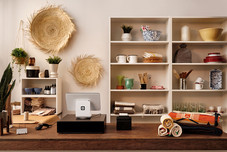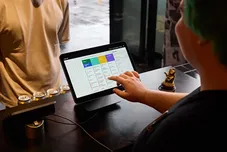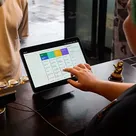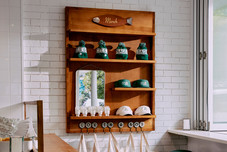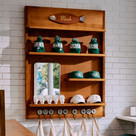Table of contents
Savvy business owners are constantly looking to innovate. In an increasingly competitive world, the ability to create products that meet – and anticipate – changing customer expectations has never been so important.
So, what’s the secret to developing and launching a killer new product? How do business owners go about transforming a great idea into a market-ready product?
Inspiration and entrepreneurial drive are invaluable attributes to support your innovation aspirations. However, while the product-development process may seem a little mysterious or onerous, following a defined approach will give you the best chance of launching a product that achieves market success.
How do I generate new product ideas?
While a fantastic idea for a new product might present itself in a eureka moment, more often, successful new product development happens as the result of a planned and intentional process.
Remember that product development doesn’t always need to be about cutting-edge innovation. Many businesses have launched incredibly successful new products by thinking incrementally rather than aspiring to ‘change the game’.
Start with what you already know
As a business owner, you know your customers and market thoroughly. You understand common pain points, barriers to purchase and the competitive landscape. Spend some time assessing your existing product portfolio against these aspects and ask yourself if you could tweak your range to better meet customer needs based on your learnings.
Consider the entire customer experience
The customer experience doesn’t start and stop while the customer is consuming your product or service. The usability of your online booking system or shopping cart and the availability and effectiveness of your customer support function are just a few of the non-product aspects that will colour your customers’ experiences. Can you reinvent your product or service delivery model to create a more compelling offer?
Undertake in-depth market research
You’ll already know your close competitors, but conduct some initial research on Google and social media to check the results for search terms related to your new product idea. Look at different product and pricing approaches and delivery models – is your new product idea different enough from what’s already out there?
If you feel your prospective product has potential, consider conducting market research. This might include focus groups, user interviews, workshops and surveys. Depending on your budget, you can manage this independently or hire a market research company to support you.
At the end of this process, you should have a clear and concise description of your new product that explains its features and benefits and can be understood by someone who’s not familiar with the concept.
How do I protect my intellectual property?
If you’ve validated your new product idea and are planning to move ahead to prototyping and a possible market launch, you should protect your idea before sharing it with others. You should also check that your new product design hasn’t already been registered by someone else.
The five primary methods of protecting your intellectual property (IP) are trademarks, patents, copyright, design rights and domain names. IP Australia, the Government agency that administers IP rights and helps businesses make the most of their IP, offers a step-by-step guide to intellectual property at www.ipaustralia.gov.au/.
How do I prototype my new product idea?
A prototype is a mock-up of your proposed new product that’s used to verify your product design. The prototyping process will depend on the type of product you’re developing and could be a do-it-yourself undertaking or a process involving third-party suppliers and manufacturers.
Do you need a functional model to show potential users and investors how the product works, or will a 3D representation suffice? Either way, the advent of 3D printing has made it much easier and more cost-effective for entrepreneurs to prototype new product designs. Australian-based businesses such as Zeal and Thinglab offer on-demand 3D design and printing services to help with prototyping.
How do I find suppliers to make my new product?
Once you’re happy with your new product prototype, it’s time to start thinking about product production. Depending on the nature of your product, you might handmake the product yourself or outsource to a manufacturer. If you decide to work with a supplier, choosing the right one is an important decision – the Australian Business Government website has some helpful tips for working through this process.
Regardless of the complexity of your supply chain, your new product will need inputs (the materials required to create the product), and you’ll also have to consider aspects such as storage, order fulfilment and shipping. You should work through these areas methodically to understand the impact of a supplier shortage or delivery delay before they happen – do you have a relationship with alternative suppliers if your primary provider isn’t able to meet your needs?
How do I get great product photography for my new product?
Whether you’re advertising online or instore, it’s difficult to overestimate the value of great product photography. Nothing screams amateur more than blurry, poorly composed or badly lit product photographs.
Photography equipment is expensive, and capturing the right light, product features and styling for your new product is usually best left to a professional photographer. If you’re not in a position to pay for professional product photography, learn some expert tips and tricks for photographing your products.
How do I develop a business plan for my new product?
A comprehensive business plan can be the difference between success and failure when it comes to new product development. The business planning process will require you to take a structured approach to assessing your new product idea in the context of the market, clarifying your financial objectives and outlining your plan for the future. A detailed business plan template is available at the Australian Business Government website.
How can I fund the product development process?
If you can’t – or don’t want to – meet the costs of the product development process with business or personal funds, some popular alternative funding methods include:
- Crowdfunding – where you seek money to fund your new product development efforts via crowdfunding websites such as Pozible or Birchal.
- Angel investors – where you ask ‘business angels’ to invest in your business by contributing funding, skills and connections.
- Invoice finance – also called debtor finance, this allows you to access funding using your accounts receivable ledger as collateral.
- Borrowing from family and friends – asking those you know for a loan can mean flexible terms and a quick cash injection; but your relationship may be damaged if things go pear-shaped.
Where can I get help with my commercialisation strategy?
The government’s Accelerating Commercialisation program provides small and medium businesses with access to expert advice and funding to help get a new product, process or service to market. When you apply for commercialisation guidance, you’ll receive tailored guidance and support to help you to develop your commercialisation strategy. You could also receive financial assistance to bring your product to market via an Accelerating Commercialisation Grant.
Each business’s product development journey will be different. Whether you manage the entire process yourself or partner with experts (market research companies, manufacturers, photographers, etc.), taking a structured and sequential approach will give you the best chance of a successful product launch.
![]()

